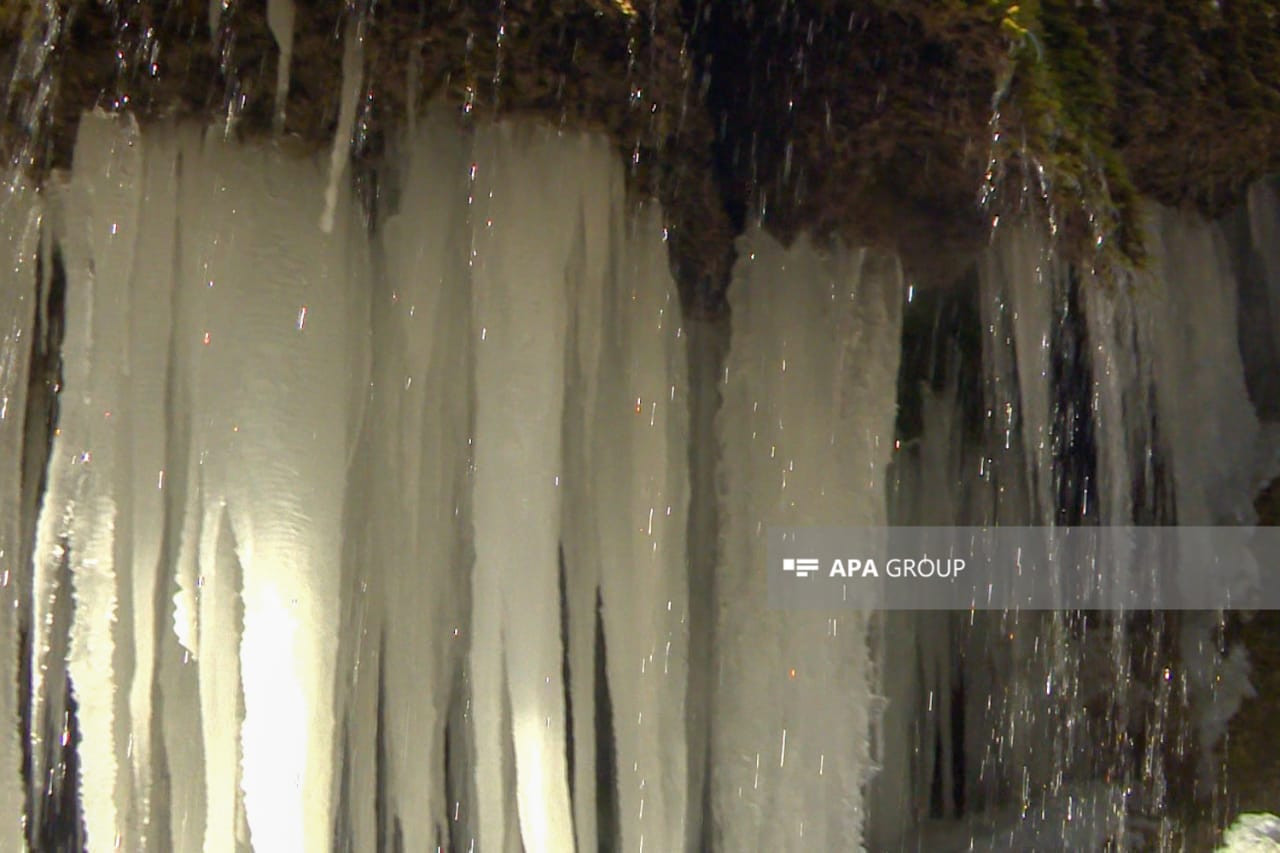Chetir waterfall, located in the Dashalti valley, near the city of Shusha, Azerbaijan, was under enemy occupation for nearly 30 years.
An employee of APA's Karabakh office visited the area where the waterfall is located.
"Leaving the city of Shusha, we head along the Dashalti valley to the Chetir waterfall along the bank of the Dashalti river.
On a snowy winter day, the path to Chetir Falls is just a trail.
The official of the Karabakh separatists, Lusine Karakhanyan, announced that after the 44-day Patriotic War, the area where the waterfall is located is considered a neutral zone.
The statement of the official of the separatist regime does not dissuade us.
Along the way, we see caves with an ancient settlement on a steep cliff on the Cıdır plain.
In front of the Shusha cave and in the surrounding areas, we can see the remains of the castle walls from the ancient period.
Of course, it has been scientifically proven that ancient people started living in Shusha 200-250 thousand years ago and that this land is one of the centers of ancient civilization.
In 1971-1975, Azerbaijani scientist, paleontologist, founder of the Azerbaijani school of paleontology, archaeologist.
As a result of the archeological excavations conducted under the direction of professor Mammadali Huseynov, doctor of historical sciences, an ancient human camp belonging to the Paleolithic culture was discovered near the city of Shusha, in the lower part of the Cidir Plain.
We continue on our way.
We walk 4 km and reach Chetir waterfall.
Chetir waterfall - located in Dashalti valley in Shusha district.
Because of its resemblance to an umbrella, the waterfall called Chetir Shalalasi is also called "Shir-shir" waterfall because of the rare sound made by the water.
The waterfall is umbrella-shaped.
The water flowing around it is frozen.
One feels in the world of fairy tales.
We enter the cave under the "Umbrella".
Beauty fascinates a person.
One just wants to take a breath and watch for hours.
For hundreds of thousands of years, the water that seeps from the rocks of the mountains of Shusha flows into the Dashalti River from here.
For more than 30 years, Armenians called this natural wonder "Mamrot Kar" or "Zontikner".
In those years, the occupying regime tried to attract maximum tourism to such sights of Karabakh.
He presented the area as Armenian territory to tourists from Russia, Germany and France in particular."
